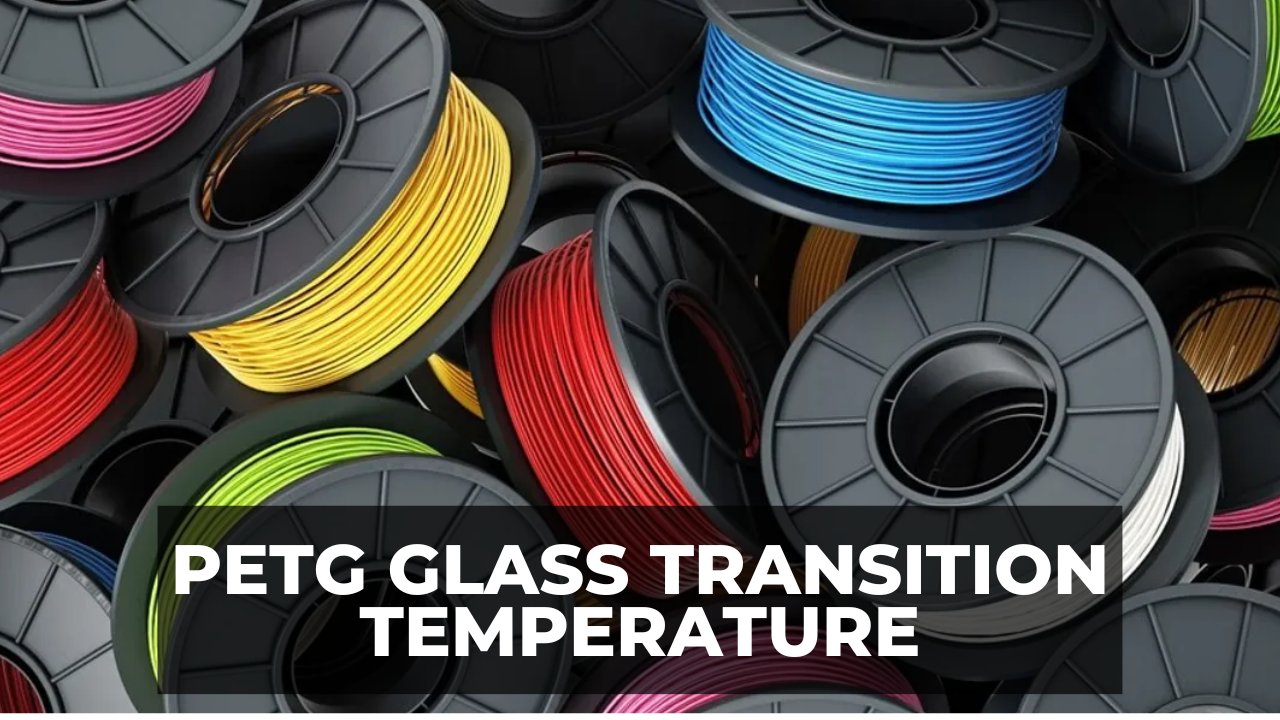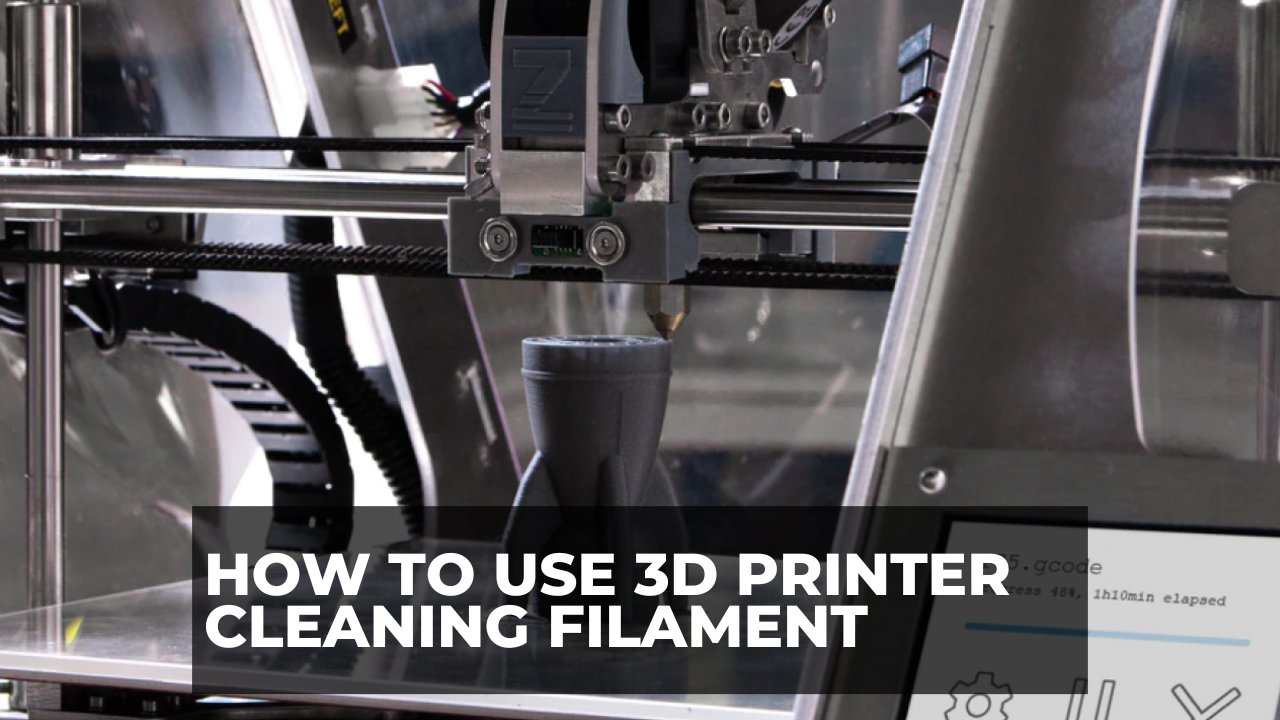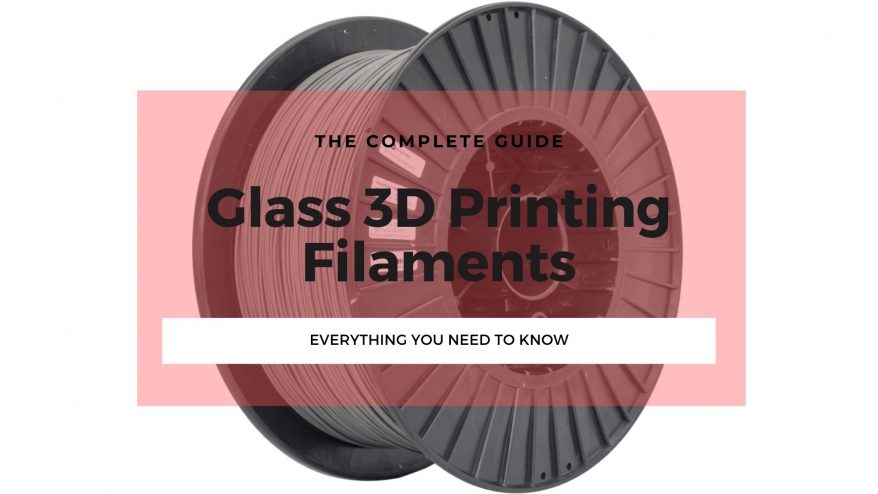
Glass 3D printing filaments are a handy way of adding strength to your models, and can be made safely and easily using many desktop 3D printers. Hobbyists and professionals alike will find their 3D printing endeavors vastly improved by using these filaments.
In this article, we will take you through two of the most popular glass 3D printing filaments, glass PLA and NylonG, their advantages and disadvantages, and some innovative ways in which glass is being implemented in the 3D printing industry.
- For a guide to every filament, also check out our complete 3D printer filament guide.
Part 1: Glass 3D Printing Filaments Printing Parameters
The main way in which glass is incorporated into these 3D printing filaments is through making composite filaments with tiny fragments of glass fibers within. These ‘composite’ filaments, encompassing not only glass infused filaments but also carbon fiber, are vastly stronger than their pure plastic counterparts.
The inclusion of other materials such as glass in these filaments improves strength and reduces susceptibility to bending and breaking. This means that the parts produced have far greater tensile strengths and are much more durable.
Glass filaments also have a number of benefits that make the 3D printing process much easier as well. They have a much lower potential for warping than other plastics, meaning less special attention is needed during the cooling process. They also do not produce the same odors or toxic gasses that other plastic filaments do.
There are two particular glass-infused filaments that are noteworthy as they have become increasingly prevalent in the last few years.
Glass-Infused PLA
- Printing Temperature: 180°C-220°C
- Bed Temperature: 40°C (Optional)
Polylactic Acid (PLA) is a favorite material among many beginners in 3D printing as it is much easier to print than many other plastics. Its 180°C extruder temperature is far lower than ABS or PP.
It is a stiff, brittle plastic used for prototypes, ornaments and cosmetic accessories, helped to no end by the wide array of colors that it comes in. PLA is also biodegradable, making it among the most environmentally friendly plastic filaments.
The addition of glass into PLA filaments helps to remove these shortcomings, and makes PLA a much more well-rounded and versatile material. Composite glass-infused PLA is 1.5x stronger and impact resistant, and also twice as flexible than standard PLA.
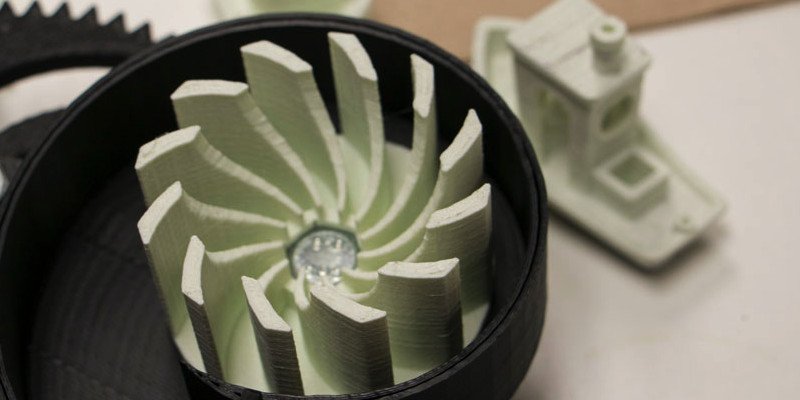
This means it is more durable than Acrylonitrile Styrene Acrylate (ASA), a popular plastic in outdoor applications, yet nearly as flexible as pure nylon, giving it an unforeseen range of improvements that broaden the material’s capabilities.
This makes PLA ideally suited for exterior fittings and outdoor tools, and can be printed much easier than other comparably strong materials.
NylonG
- Printing Temperature: 260°C-280°C
- Bed Temperature: 60°C-75°C
Similarly to PLA, the infusion of glass fibers into nylon has maintained what makes it unique and useful, but helped to correct some of its deficiencies.
Pure nylon is among the most flexible 3D printing filaments on the market, making it useful in producing products such as cable ties, fishing lines, and various forms of clothing where flexibility and durability are key. It is also extremely resistant to wearing down, meaning harder variations of nylon are used for things like skateboard wheels.
- If you are interested in printing flexible filaments, we also have a guide to 3D printing TPU filaments.
However, nylon 3D printing does have a number of flaws and potential pitfalls. It requires expert care as it is very prone to warping and disfiguring if cooled too fast. The filament itself is also very hygroscopic, so the filament must be kept in an airtight container or it will deteriorate, printing weaker parts with bubbly imperfections.
- We have another article on Nylon carbon fiber composites.
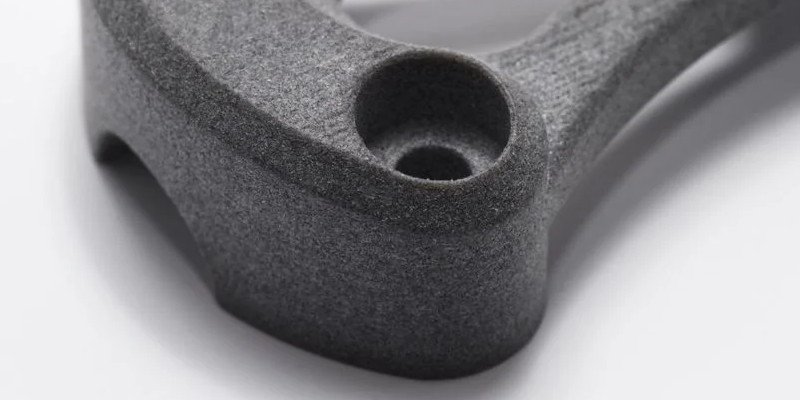
After production, it must also be properly dried to avoid serious printing defects and for this reason, nylon is extremely unsuitable for moist or humid environments.
NylonG removed many of these concerns. Without losing any flexibility, the glass gives the nylon filament extra structure and makes it much stronger. This increased density also gives the added benefit of making the filament less absorbent, and reduces the possibility of moisture damage.
Also, similar to the benefits of glass-infused PLA, NylonG warps less during printing, simplifying the printing process and making the material much more accessible to hobbyists and professionals alike.
Part 2: How Much Do Glass 3D Printing Filaments Cost?
Glass 3D printing filaments are naturally slightly more expensive than their pure polymer counterparts. Glass PLA filaments start around $68 per kilogram, with NylonG starting at a much pricier $100 per kilogram.
Where to buy Glass filaments
We recommend the following glass filament selections:
- Glass filament selection of both standard and professional composites on Matterhackers here
- NylonG selection on Matterhackers
Part 3: Best Practices for Glass Filled Filaments
Use a Hardened Steel Nozzle
Glass 3D printing filaments are packed with tiny, almost microscopic fragments of glass. These are guaranteed to rub against your extruder nozzle as they are deposited, wearing away softer brass nozzles that ship with standard affordable 3D printers.
For this reason, upgrading to a steel nozzle rather than using a standard brass nozzle will save the time from constantly switching these worn down nozzles out. Hardened steel nozzles hold up better against the abrasive fibers within glass filament. This will greatly increase the longevity of your setup.
Start Heat Higher
It is best to start your heat high when 3D printing using glass-infused composites. While it is definitely possible to print at lower temperatures, especially with PLA, the glass fibers can do real damage if any clogs occur.
It’s best to avoid this by starting high and guaranteeing a good flow, and then lowering the temperature on later attempts until you find your optimum level.

Use a Raft
This is mainly for printing at lower temperatures, but using a raft is the best way to make certain of the best adhesion for your part. Starting off with a base of material and printing on top of that will give you enough of a foundation to make the best part possible.
If you notice that separating the part from the raft after printing is difficult, you can adjust the raft-model spacing setting to reduce this.
Part 4: Advantages and Disadvantages of Glass 3D Printing Filaments
Advantages of glass 3D printing filaments
Stronger Parts
The rigid structure that the addition of glass provides makes these filaments much stronger than their pure alternatives and makes them competitive with some of the strongest plastics on the 3D printing market.
They have higher tensile strengths and higher levels of impact resistance, and, despite being biodegradable, are among the most durable plastic filaments money can buy.
Overall Easier to Print
There are a number of other aspects that make these filaments easier to print than other polymers, and even more than their pure alternatives. The addition of glass makes them less prone to warping and thereby reduces the amount of special care needed to print effectively.
On top of this, they produce less odor and harmful fumes, require no special extruder, and PLA does not even need a heated bed.
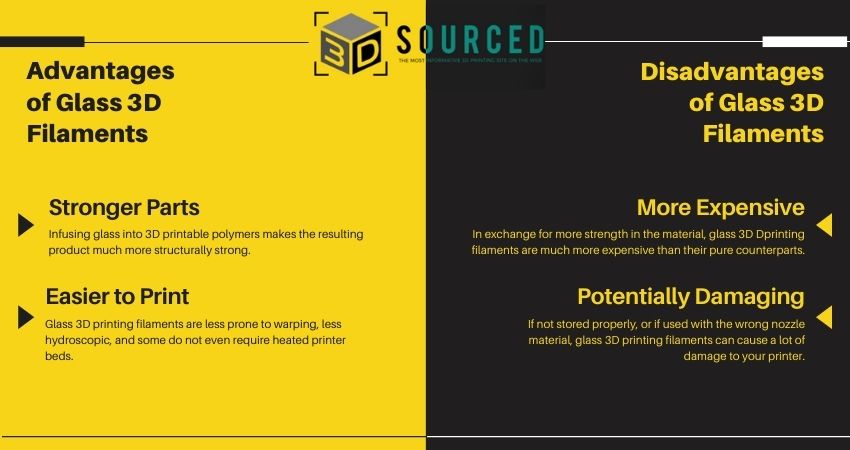
Disadvantages of glass 3D printer filaments
More Expensive
In exchange for added strength and durability, your wallet is going to have to do some heavy lifting. Both glass-infused PLA and NylonG are more than double the price of their pure polymer counterparts.
For this reason, these filaments are not ones to try out unless you have money to burn. If you are a beginner, you may fall into the traps that anyone could with any filament. The pure forms of these plastics, especially PLA, are much cheaper and give you the room to experiment with if you are on a tighter budget.
However, for professionals and industrial prototypers, engineers, and for a variety of other industrial applications, these improved material characteristics more than justify the investment.
Part 5: Alternate Methods of Glass 3D Printing
Aside from using polymer filaments, researchers have been experimenting for years with ways to 3D print using pure glass. However, despite successes, there are huge limitations. Traditional glass manufacturing requires extraordinarily high temperatures, upwards of 1500°C.
When first experimenting with 3D printing glass, manufacturers tried two different techniques. Firstly, they attempted to use deposition printing with molten glass.
However, this had significant drawbacks with the need for prolonged heating at high temperatures, as well as similarly heat-resistant equipment that did not previously exist in the 3D printing industry.
Elsewhere, experiments were conducted involving using powdered ceramic which could be deposited at room temperature, and sintered with a high-powered laser, similar to Direct Metal Laser Sintering (DMLS). Yet this reduced the capacity for complex designs for small intricate parts.
A new and slightly more accessible technique has been developed by researchers at Swiss institute ETH Zurich. Their process is very similar to stereolithography, among the first 3D printing techniques, and uses resin, containing plastic and a mixture of molecules used in the traditional manufacturing of glass.
Once deposited, the resin is irradiated with ultraviolet light to harden. The finished product is then heated, first to 600°C to burn away the polymer, and then to 1000°C to form the remaining ceramic structures into glass.
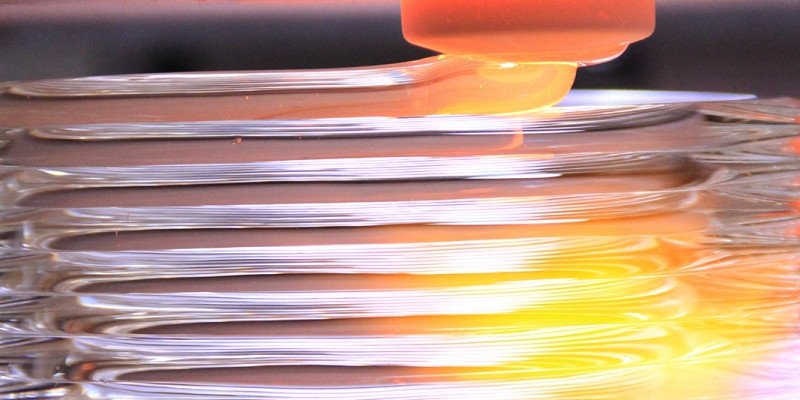
While the heating process significantly shrinks the glass model, the remaining part is crystal clear and highly detailed. Naturally, this is solely an industrial-level process, but successful products are able to maintain an extraordinarily high level of complexity, with intricate edges and designs.
Like traditional glass products, they are still very brittle and will crack and shatter under moderate stress. Due to the shrinkage issues, it is also not possible to print large designs. However, with this small but significant first step, the glass 3D printing industry is well on its way to major development.
While completely impractical for home printing, new techniques could give glass a new lease of life in the manufacturing industry, with applications in industries ranging from jewelry to aerospace to communications.
What we do see now though is glass 3D printing filaments are becoming a fixture of in-home 3D printing, and taking the first steps towards wider adoption of glass in the industry.
Related articles:


